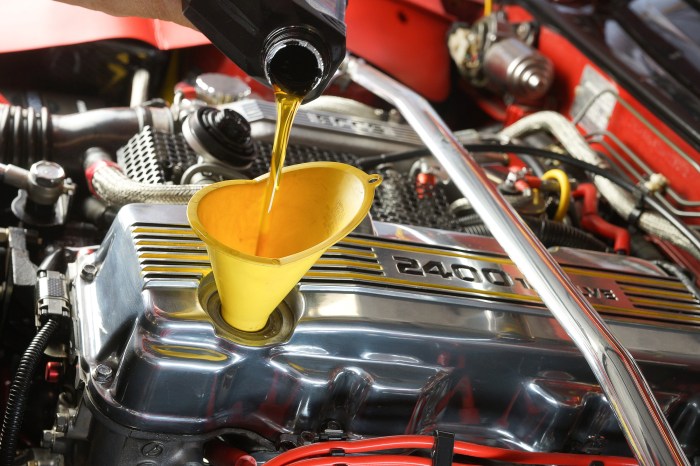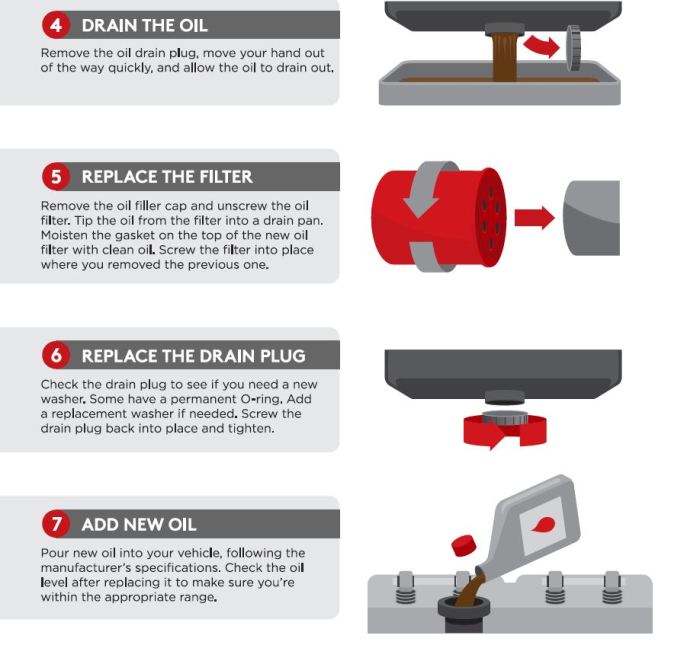Oil changing guide for your car provides essential insights into the importance of regular oil changes, the different types of oils available, necessary tools and materials, and a step-by-step process for a successful oil change. Let’s dive into the details to ensure your car runs smoothly and efficiently.
Introduction to Oil Changing

Regular oil changes are crucial for maintaining the health and performance of your car. By changing the oil at recommended intervals, you can ensure that your engine runs smoothly and efficiently.
When it comes to finding the best hybrid cars with high mileage, it’s important to consider factors like fuel efficiency and overall performance. You can explore a variety of options that offer great mileage without compromising on style and comfort.
Check out this list of best hybrid cars with high mileage to make an informed decision for your next vehicle purchase.
One of the key benefits of changing the oil regularly is that it helps to lubricate the engine parts, reducing friction and wear. This, in turn, can help prolong the life of your engine and prevent costly repairs down the line.
Looking for affordable luxury car financing options? You don’t have to break the bank to drive your dream car. There are various financing programs available that cater to different budgets and preferences. Discover the best affordable luxury car financing options that can help you get behind the wheel of a luxury vehicle without straining your finances.
Importance of Regular Oil Changes
- Prevents engine parts from rubbing against each other
- Removes dirt and debris from the engine
- Improves fuel efficiency
Consequences of Neglecting Oil Changes
- Increased risk of engine damage
- Reduced engine performance
- Potential for engine overheating
Frequency of Oil Changes
Typically, oil changes are needed every 3,000 to 5,000 miles, depending on the type of oil used and the driving conditions. It is important to follow the manufacturer’s recommendations for oil change intervals to keep your car running smoothly.
Understanding Oil Types and Grades

When it comes to selecting the right engine oil for your car, it is essential to understand the different types and grades available in the market.
Types of Engine Oils
- Conventional Oil: This is the traditional oil derived from crude oil. It is generally more affordable but may not offer the same level of performance and protection as synthetic oils.
- Synthetic Oil: Made from artificially created chemical compounds, synthetic oils offer superior performance, protection, and longevity compared to conventional oils.
- Blend Oil: A combination of conventional and synthetic oils, blended oils aim to provide a balance between performance and cost.
Importance of Selecting the Correct Oil Grade
- Choosing the right oil grade is crucial as it ensures proper lubrication, engine protection, and overall performance of your vehicle.
- Refer to your car’s owner’s manual to determine the recommended oil grade for your specific make and model.
Determining the Right Oil Viscosity
- Oil viscosity refers to the thickness of the oil and its ability to flow at different temperatures.
- Consider factors such as your car’s age, mileage, and driving habits to determine the right oil viscosity for your vehicle.
Considerations for Choosing Oil Based on Climate or Driving Conditions, Oil changing guide for your car
- In colder climates, opt for oil with a lower viscosity to ensure proper engine lubrication during cold starts.
- For harsh driving conditions such as towing or stop-and-go traffic, choose oil with added additives for enhanced protection.
Tools and Materials Needed
To successfully perform an oil change on your car, you will need a set of essential tools and materials. Having the right equipment is crucial for a smooth and efficient oil change process. Additionally, ensuring you have the correct materials such as the right oil filter and oil type is essential for maintaining the health of your vehicle’s engine.
Essential Tools
- Oil filter wrench
- Drain pan
- Ratchet and socket set
- Funnel
- Oil filter removal tool
- Oil filter drain tool
- Oil filter cap wrench
- Shop rags or paper towels
Importance of Having the Right Materials
- Correct oil filter: Using the right oil filter ensures proper filtration and prevents contaminants from entering the engine.
- Oil type: Using the recommended oil type for your vehicle helps maintain engine performance and longevity.
Safety Equipment
- Safety glasses or goggles to protect your eyes from splashing oil
- Gloves to keep your hands clean and protected
- Jack stands or ramps to safely lift the car
- Wheel chocks to prevent the car from rolling
Tips for Purchasing Quality Oil and Filters
- Visit your local auto parts store for a wide selection of quality oil and filters.
- Consider purchasing oil and filters from reputable brands known for their quality products.
- Check your vehicle’s manual for the recommended oil grade and filter specifications.
- Look for oil and filters that meet or exceed the manufacturer’s requirements for your vehicle.
Step-by-Step Oil Changing Process: Oil Changing Guide For Your Car
When it comes to changing the oil in your car, it’s essential to follow a systematic process to ensure everything is done correctly and safely. Below are the steps involved in changing the oil, along with important tips to keep in mind.
Jacking Up and Securing the Car
Before you can start changing the oil, you need to jack up the car and secure it properly. Make sure to park the car on a level surface and engage the parking brake. Use jack stands to support the vehicle securely before crawling underneath.
Locating the Oil Drain Plug and Oil Filter
The oil drain plug is typically located on the bottom of the oil pan, which is attached to the engine. Use a wrench to loosen the drain plug carefully and have a drain pan ready to catch the old oil. The oil filter is usually located near the drain plug, but it can vary depending on the car make and model.
Replacing the Oil Filter
After draining the old oil, it’s important to replace the oil filter with a new one. Unscrew the old filter using an oil filter wrench and make sure to lubricate the rubber gasket on the new filter before installation. Tighten the new filter by hand to prevent leaks.
Adding New Oil
Once the oil filter is replaced, it’s time to add new oil to the engine. Refer to your car’s manual for the correct oil type and quantity. Use a funnel to pour the oil into the engine slowly and check the oil level using the dipstick to ensure it’s at the right level.
Final Checks
After adding the new oil, start the engine and let it run for a few minutes to circulate the oil. Check for any leaks around the oil filter and drain plug. Finally, turn off the engine and recheck the oil level before lowering the car back down.
Remember to properly dispose of the old oil at a recycling center or an auto parts store that accepts used oil.
Conclusive Thoughts

In conclusion, mastering the art of changing oil in your car is crucial for its longevity and performance. By following this guide diligently, you can ensure your vehicle stays in top condition for years to come. Stay proactive and keep your car running smoothly!